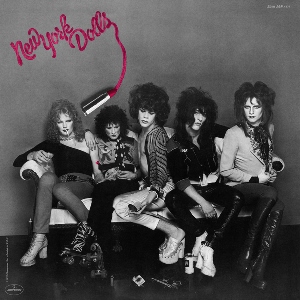Here’s an extract from Setting Free the Kites:
Every Tuesday evening my parents went out for their weekly bridge game. Liam took their absence as license to play his music even louder than usual. On one such night, Nathan and I were sitting on my brother’s bed while he lectured us about music he hated – which was pretty much everything. Liam was rigorous and unstinting in his derision of all music that didn’t fall within his narrowly defined tastes. Even Pink Floyd and Led Zeppelin were dismissed as bombastic dinosaurs, self-indulgent fops. (Concept album? he raged. Pile of shit. How’s that for a concept?) But he reserved his greatest scorn for the hippies with their acoustic guitars.
“Joni Mitchell? Cat Stevens?” Liam wagged his finger at us in warning, as if listening to that stuff might lead us to Lawrence Welk. “Have you listened to the lyrics? Every song is a fucking question. But this!” My brother brandished the New York Dolls album that was lying in his lap. “This has answers.” He lowered the needle on to the vinyl.
As the skull-shaking noise of “Personality Crisis” blasted into the room, Nathan and I looked at the photograph on the record sleeve. The five band members were lounging on a sofa, looking moodily at the camera. They were a long-haired, androgynous bunch in platform boots and flamboyant outfits. Between them they wore more eyeliner than a chorus line of dancing girls.
As usual, I’ve written a lot about music in my new novel. This time it’s glam rock and punk rock – although the term “punk” was not in wide usage at the time. Being English, I knew all about the Sex Pistols and the Clash, but was not very familiar with their American counterparts – the aforementioned New York Dolls, the Ramones, Iggy Pop and the Stooges, and other assorted bands and musicians. My voyage of discovery through some of the more outrageously named and costumed musical personalities of the early 1970s was fun. I read some interesting books (the most entertaining being Legs McNeil’s Please Kill Me) and listened to a lot of records that were musically rudimentary but thoroughly invigorating. As a consequence I have developed a real fondness for this music – in a way that (I can admit now) I never did for all the barbershop singing that I listened to while researching A Good American. I fell in love with unpretentious chaos of all those loud, three-chord anthems. They are bracingly short, simple songs, and they’re played with such good-natured enthusiasm and wit that it’s hard not to listen to them and feel more cheerful.
Don’t believe me? See for yourself. Here’s a Spotify playlist of all the songs that appear in the novel. And no, the John Denver is not a mistake. Rock on.

